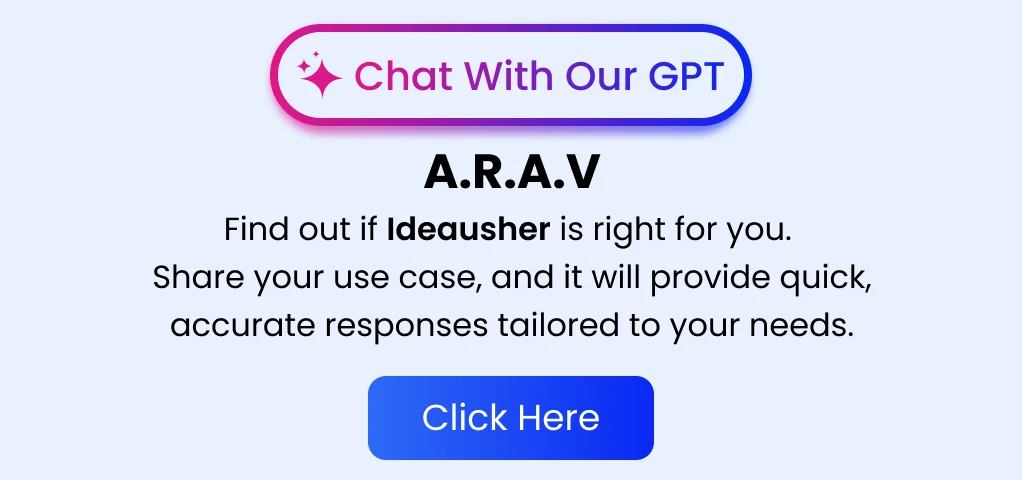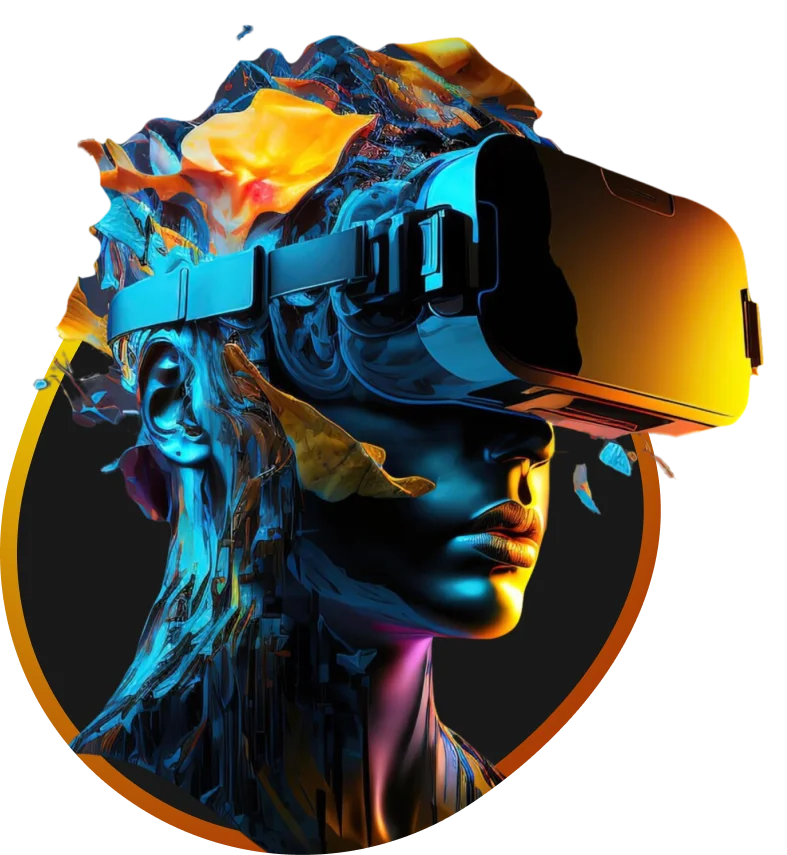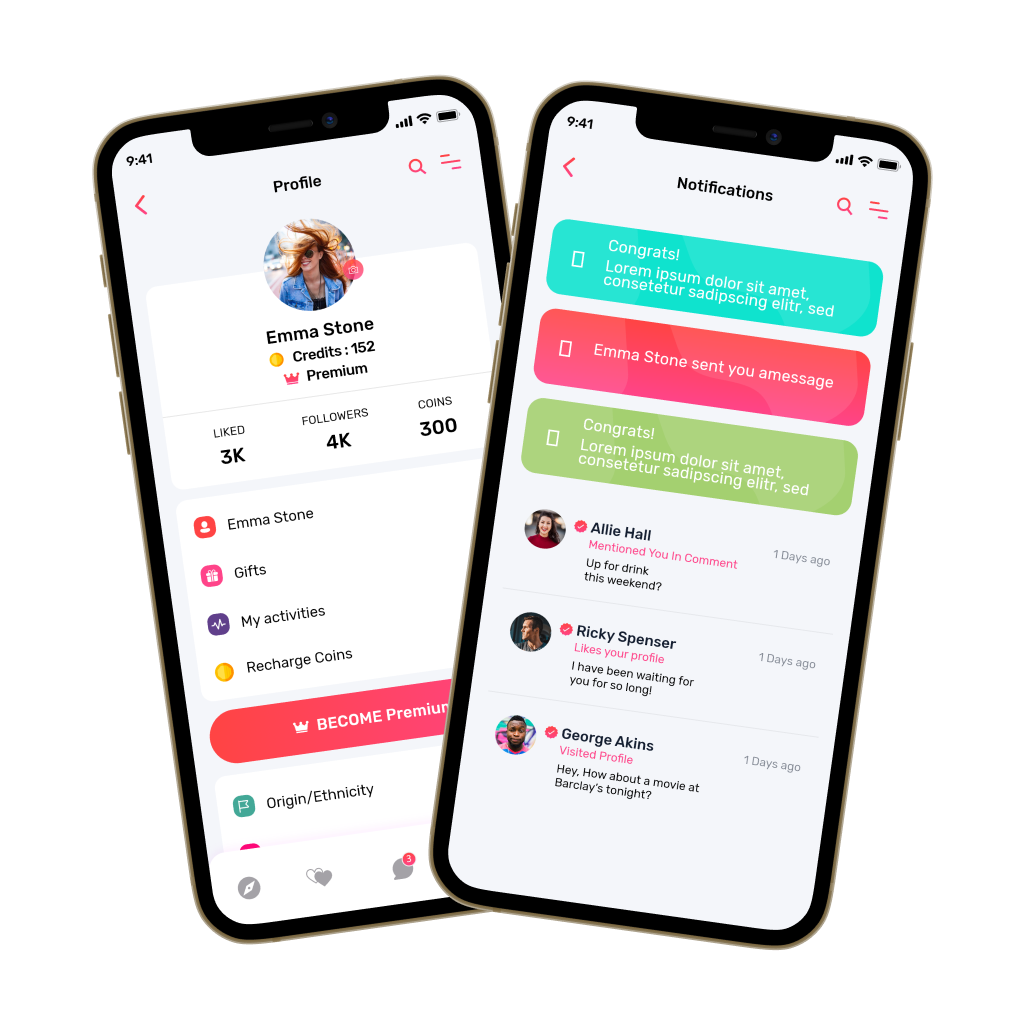AI chatbots and assistants are transforming the way we interact with technology, making our daily tasks easier and more efficient. From helping customers with quick answers to managing your smart home, these tools are quickly becoming part of everyday life. In fact, the AI chatbot market is expected to reach $1.34 billion by 2024, growing rapidly at a rate of 24.3%. This boom shows just how much businesses and users are embracing AI to simplify and enhance their experiences.
Some popular examples are Amazon’s Alexa and ChatGPT. Alexa, for instance, generated over $10 billion in revenue from its smart devices in 2023.
ChatGPT, on the other hand, helped OpenAI reach $1 billion in revenue in the same year.
Developing an AI chatbot or assistant is no small feat, as it requires a mix of machine learning, NLP, and system design. In this blog, we’ll take you through the steps of building your AI-powered platform so you can create something that’s not only smart but also user-friendly and effective.
Key Market Takeaways for AI Chatbots and Assistants
Source: TheBusinessResearchCompany
This growth is driven by factors like the increasing adoption of AI and machine learning technologies, the rising demand for virtual assistants and customer support automation, and the need for more personalized customer experiences.
Thanks to advancements in NLP, chatbots can now handle more complex queries with impressive accuracy, making them essential across industries like e-commerce, banking, and healthcare. Consumer demand for instant, personalized interactions further boosts the adoption of AI-driven chatbots. Additionally, the rise of messaging platforms has significantly expanded their reach.
Several exciting partnerships are shaping the future of AI chatbots. For instance, in January 2025, LG Electronics and Microsoft joined forces to integrate their technologies into AI-driven agents for homes, cars, hotels, and offices.
Other examples include the GenAI Virtual Assistant, designed for a car dealership, which helps engage customers and provide accurate answers to complex inquiries. Master of Code Global also created the Luxury Escapes Travel Messenger Chatbot, which allows users to search for deals, book trips, and even play a fun “Roll the Dice” game to uncover unique travel destinations.
These innovations showcase how AI chatbots are evolving to offer more engaging and efficient solutions across various sectors.
Work with Ex-MAANG developers to build next-gen apps schedule your consultation now
A Perfect Time to Invest in AI Chatbot and Assistant Development
Investing in AI chatbots and assistants has become a smart move for businesses looking to stay competitive. With AI technology evolving rapidly, these tools can automate customer support, improve response times, and handle thousands of inquiries at once. For example, AI-driven chatbots can manage 80% of routine customer service tasks, significantly cutting down the need for human agents. By using AI, companies can save on labor costs while offering around-the-clock support, which helps build better customer relationships and boost satisfaction. It’s a win-win!
For example, Zendesk saw a significant increase in revenue by integrating AI chatbots into its customer service platform, reporting over 25% revenue growth in 2023.
Similarly, Bank of America’s Erica, a virtual assistant, has handled over 100 million customer interactions in 2023 alone, helping the bank save an estimated $500 million in operational costs by automating tasks such as account inquiries and payments.
As more businesses embrace AI chatbots, the potential for profitability continues to grow. These tools are versatile and can be tailored to a variety of industries, from retail to healthcare, helping to reduce overhead and boost sales. Investing in AI now means positioning yourself ahead of the curve for long-term success in a rapidly growing market.
Three Building Blocks for Creating an AI Chatbot and Assistant
Here are the three key components for building AI virtual assistants:
1. Data Ingestion and Retrieval Pipeline
Efficiently gathering, organizing, and structuring both structured and unstructured data is crucial for the AI chatbot to function effectively.
How it Works
- Structured data: This includes organized data such as customer profiles, order history, or product catalogs. These are typically stored in databases and require an efficient retrieval system.
- Unstructured data: This includes free-form text like FAQs, manuals, chat transcripts, and knowledge bases. Natural Language Processing (NLP) techniques are used to process and structure this information for the chatbot to understand and retrieve accurately.
- Data Processing: Both data types are processed and stored in a database for quick retrieval by the AI agent. This involves standardizing and cleaning the data for better interaction with the chatbot.
2. AI Agent
The AI agent is responsible for processing user queries and providing accurate, relevant responses using the structured and unstructured data it has access to.
How it Works:
- LangGraph Agentic LLM Programming: A language model-based system (like LangGraph) processes queries by using the underlying structured and unstructured data. This programming enables the agent to generate accurate responses based on the input it receives, making it adaptable to a wide range of topics or questions.
- Memory: The AI assistant is capable of maintaining short-term memory (for the current session or ongoing conversations) and long-term memory (to recall past interactions across multiple sessions). This makes it more efficient in multi-turn conversations.
- Summarization & Sentiment Analysis: After each interaction, the chatbot can summarize the key points and analyze customer sentiment, helping it improve responses in future interactions. For example, if a customer expresses frustration, the chatbot might adjust its tone or escalation strategy.
3. Operations Pipeline
The operations pipeline helps monitor performance and provides customer service teams with valuable insights to improve overall service quality and efficiency.
How it Works:
- Insights for Operators: By analyzing past interactions, the system provides customer service representatives with useful information such as sentiment analysis, common issues, and feedback trends. This helps operators tailor their responses more effectively and resolve issues faster.
- Analytics: Data-driven insights are used to improve the system. By analyzing patterns in conversations, call resolution times, and response accuracy, the chatbot and the operators can continuously evolve. Analytics can be used to detect weaknesses in the chatbot’s performance, allowing for improvements in future versions of the system.
A Simple Example to Tie It Together
Let’s say you’re chatting with an AI assistant about an order you placed online.
- Data Ingestion: The assistant pulls up your order history (structured data) and reads a manual about delivery policies (unstructured data).
- AI Agent: You ask, “When will my order arrive?” The AI agent uses its programming (LangGraph) to check your order in the database and finds the shipping information. It also remembers from your previous chats that you prefer faster shipping.
- Operations Pipeline: During your chat, the assistant detects that you’re frustrated because your order is delayed. It alerts the human support team (if necessary) and flags the conversation for sentiment analysis, so they can respond more empathetically.
Development Steps for AI Chatbot and Assistants
Here are the steps to develop AI chatbots and assistants,
1. Define Objectives and Use Cases
Businesses must determine the primary purpose of the AI chatbot or assistant. Whether it is for customer service, personal assistance, e-commerce, or healthcare, defining the use case helps shape the chatbot’s functionality and user experience.
2. Select the Right AI Model and Technology Stack
Choosing the appropriate AI model and technology stack is essential. Businesses can use rule-based models, machine learning algorithms, or deep learning frameworks like OpenAI’s GPT, Google’s Dialogflow, or IBM Watson. The tech stack should also include cloud computing, databases, and API integrations.
3. Develop Natural Language Processing Capabilities
AI chatbots require NLP to understand and generate human-like responses. Implementing tokenization, intent classification, entity recognition, and sentiment analysis enhances their ability to process and interpret user messages accurately.
4. Create a Knowledge Base and Training Data
A well-structured knowledge base is necessary for chatbots to provide meaningful responses. Businesses should compile FAQs, customer support scripts, and domain-specific information. Training the AI model with diverse datasets improves accuracy and contextual understanding.
5. Design a Conversational User Interface
The chatbot’s interface must be intuitive and user-friendly. Designing conversational flows, integrating multimedia responses (text, voice, images), and ensuring seamless interaction across multiple platforms enhances the overall user experience.
6. Implement Integration with Third-Party Services
AI chatbots should connect with CRM systems, databases, payment gateways, and messaging platforms like WhatsApp, Facebook Messenger, and Slack. API integration enables smooth communication and access to real-time information.
7. Develop Personalization and Adaptive Learning Features
Advanced AI chatbots use machine learning and reinforcement learning to adapt responses based on past interactions. Personalization features, such as recognizing user preferences and history, improve engagement and user satisfaction.
8. Ensure Security, Compliance, and Data Privacy
Businesses must implement robust security measures, including encryption, authentication, and compliance with data privacy regulations like GDPR and CCPA. Protecting user data ensures trust and prevents unauthorized access.
9. Test, Deploy, and Continuously Improve
Thorough testing, including functional, performance, and usability testing, ensures a smooth chatbot experience. After deployment, monitoring user interactions and gathering feedback help refine responses, fix issues, and upgrade the AI model for better performance.
Cost of Developing AI Chatbot and Assistants
| Category | Task | Estimated Cost | Description |
| 1. Research and Planning | Market Research | $500 – $2,000 | Understanding user needs, analyzing competitors. |
| Feasibility Study | $1,000 – $5,000 | Evaluating technical feasibility, platform selection, defining scope. | |
| Detailed Requirements | $1,500 – $13,000 | Documenting features, functionalities, and user flows. | |
| Subtotal | $1,000 – $20,000 | ||
| 2. Design | UI/UX Design | $1,000 – $8,000 | Creating wireframes, mockups, and visual design. |
| Conversation Design | $1,000 – $7,000 | Defining dialog flows, intents, entities, and responses. | |
| Subtotal | $1,000 – $15,000 | ||
| 3. Development | Front-End Development | $2,000 – $20,000 | Building the chatbot interface (web, mobile app, or messaging platform). |
| Back-End Development | $2,000 – $20,000 | Setting up servers, databases, and APIs. | |
| AI/NLP Development | $1,000 – $20,000 | Training models, integrating NLP/ML services. | |
| – Data Collection & Preparation | $500 – $5,000 | Gathering and cleaning training data. | |
| – Model Training | $500 – $10,000 | Training the AI model using chosen frameworks. | |
| – NLP Integration | $500 – $5,000 | Integrating NLP services for understanding and generating text. | |
| API Integrations | $1,000 – $10,000 | Connecting to external services (e.g., CRM, payment gateways). | |
| Subtotal | $5,000 – $60,000 | ||
| 4. Testing and Quality Assurance | Functional Testing | $500 – $7,000 | Ensuring all chatbot features work as expected. |
| Usability Testing | $500 – $5,000 | Evaluating user experience and ease of interaction. | |
| Performance Testing | $500 – $3,000 | Assessing chatbot responsiveness under load. | |
| AI Model Evaluation | $500 – $5,000 | Checking the chatbot’s accuracy and effectiveness. | |
| Subtotal | $1,000 – $15,000 | ||
| 5. Deployment and Maintenance | Deployment | $200 – $2,000 | Launching the chatbot on the chosen platforms. |
| Monitoring and Maintenance | $300 – $8,000 per year | Performance tracking, bug fixes, and updates. | |
| Ongoing Model Training/Improvement | Variable | Regular updates with new data (cost depends on complexity). | |
| Subtotal | $500 – $10,000 per year | ||
| Total Estimated Cost Range | $10,000 – $100,000 |
Factors Affecting the Development Cost of AI Chatbots and Assistants
Several variable factors can significantly influence the overall cost of developing AI chatbots and assistants. Beyond typical software development considerations, some aspects are uniquely tied to the complexities of AI and natural language processing.
- AI Model Complexity: The choice of AI models, from simple rule-based systems to sophisticated deep learning models, can directly impact cost. Custom-trained models, especially those requiring large datasets and significant computational resources, are considerably more expensive than using pre-trained APIs or simpler conversational frameworks.
- Data Requirements: AI models thrive on data. The cost of acquiring, cleaning, and preparing training data can be substantial, especially for specialized domains. The volume and quality of data directly influence model performance and, consequently, the development timeline and budget.
- NLP/NLU Sophistication: The level of natural language understanding required for the chatbot or assistant is a key cost driver. Simple keyword recognition is less expensive than advanced NLU, which can handle complex grammar, context, and intent recognition.
- Integration Complexity: Integrating the chatbot with existing systems (CRM, ERP, etc.) can add significant cost, particularly if custom APIs or complex data mapping is required.
Top 5 AI Chatbots and Assistants in 2025
Here are the top five AI chatbots and assistants in 2025,
1. L’Oréal
L’Oréal uses the ModiFace AI chatbot to allow customers to try on makeup virtually through their smartphones. The chatbot helps customers explore over 50+ makeup products, make personalized recommendations, and place orders directly via messaging apps or websites. It has been used in over 30 countries, enhancing the customer shopping experience and driving sales through digital channels.
2. H&M
The AI chatbot used by H&M, helps customers find product information, check availability, and navigate the website. Ada offers personalized recommendations based on the customer’s browsing behavior, which has contributed to a 20% increase in online conversion rates and has successfully handled over 1 million queries each month.
3. Lufthansa
Mildred, the AI chatbot by Lufthansa, assists customers with booking flights, checking flight status, and providing general airline information. It engages passengers in natural, conversational ways and has helped Lufthansa reduce call center inquiries by 15% while enhancing overall customer satisfaction by 30%.
4. KLM Royal Dutch Airlines
BlueBot, KLM’s AI chatbot, helps customers book flights, answer frequently asked questions, track luggage, and provide real-time customer service assistance. It’s available on platforms like Facebook Messenger and WhatsApp, where it handles over 50,000 queries per day, improving customer engagement and operational efficiency.
5. Macy’s
Macy’s On Call, an AI chatbot designed to assist shoppers in navigating stores, helps customers with directions, product availability, and promotions. The chatbot has guided over 100,000 shoppers to find products in stores, improving the in-store shopping experience and contributing to a 5% increase in customer satisfaction scores.
Conclusion
AI chatbots and assistants are essential for businesses today. They improve customer service with 24/7 support, boost efficiency by automating tasks, and help generate leads and sales through proactive engagement. Additionally, they provide valuable insights into customer behavior, enabling smarter decisions. A tailored AI assistant streamlines operations reduces costs, and increases profitability by optimizing processes and enhancing customer satisfaction.
Looking to Develop an AI Chatbot and Assistant?
At Idea Usher, we focus on creating advanced AI chatbots and assistant solutions designed to meet your business’s specific needs. With over 500,000 hours of coding experience, we have the expertise to build smart, conversational AI that improves your operations, boosts customer engagement, and supports business growth. Let us help you unlock the full potential of AI to develop a game-changing, innovative solution.
Work with Ex-MAANG developers to build next-gen apps schedule your consultation now
FAQs
Q1: How to develop an AI chatbot?
A1: To develop an AI chatbot, begin by defining its purpose and objectives. Choose the appropriate technology and platform, like machine learning or NLP. Design an intuitive conversational flow, build or integrate the bot, and train it with real data. After development, test and refine the chatbot to ensure it functions effectively and meets user needs.
Q2: What are the features of an AI chatbot?
A2: AI chatbots come with features such as NLP to understand and respond to human language, machine learning to improve over time, and support for multiple channels. They also offer personalized interactions, automate tasks, provide 24/7 availability, and gather data insights to enhance customer experiences.
Q3: How can businesses benefit from an AI chatbot?
A3: Businesses benefit from AI chatbots by improving customer service through quick, accurate responses and around-the-clock availability. They automate repetitive tasks, reduce costs, increase customer engagement, and boost sales with personalized interactions. Additionally, they provide valuable insights into customer behavior, helping businesses make smarter decisions.
Q4: What is the cost of developing an AI chatbot?
A4: The cost of developing an AI chatbot depends on factors like its complexity, required features, and the technology used. A basic chatbot may have a lower cost, while more advanced bots with custom features and integrations will require a larger investment. Ongoing updates and maintenance will also affect the overall cost.




















